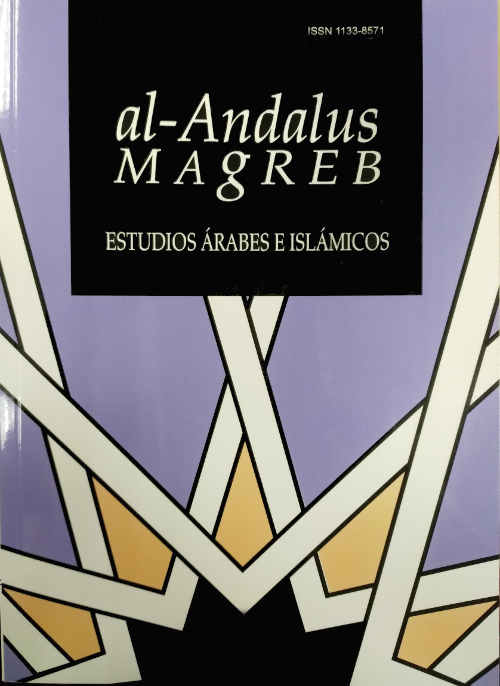Sewage disposal in the city of the medieval Muslim West according to Malikite sources

Info
Abstract
Basing on jurisprudence books, we deduced that Malikite Jurisprudents did not have big interest in the issue of drinkable water. They on the other hand, focalized on the extent of purity or impurity of water. To drain water, they distinguished between two essential sorts: rainwater and waste water. To drain this latter in the street, they imposed the use of canals. Muslims, especially the western medieval ones, used uncovered canals in the town and also covered ones. Still this type was not deep and wide enough. For this reason and many others, it constantly gets blocked. This urged them to use cesspools. From this perspective, we can speak about alienation and breaking between the Islamic and Roman era.
Keywords
Downloads
How to Cite
License

This work is licensed under a Creative Commons Attribution-NonCommercial-NoDerivatives 4.0 International License.
Those authors who have publications with this journal, accept the following terms:
a. Authors may retain their copyright and guarantee the journal the right of first publication of their work, which will be simultaneously subject to Licencia de reconocimiento de Creative Commons that allows third parties to share the work as long as its author is indicated. and its first publication this journal.
b. Authors may adopt other non-exclusive license agreements for the distribution of the version of the published work (eg: deposit it in an institutional electronic file) provided that the initial publication in this journal is indicated.
c. Authors are allowed and recommended to disseminate their work through the Internet (eg: in institutional telematic files or on their website) once the manuscript is accepted, which can lead to interesting exchanges and increase citations of the published work. (See El efecto del acceso abierto).
References
« Damas à la lumière des théories de Jean Sauvaget », dans The Islamic City, éd. A. H. Hourani et S. M. Stern, Oxford, 1970.
Ibn Ŷuzayy al-Kalbī, al-Qawānīn al-fiqhiyya, Beyrouth, Dār al-Kitāb al-ˁArabī, 1984, 1ére éd.
Th. Oziol, «L’eau à Aléria », dans L’eau et les homes en Méditerranée, Paris, C.N.R.S.
A. Mahjoubi, « Ph. Leveau et J.-L. Paillet, l’alimentation en eau de Caesarea de Maurétanie et l’aqueduc de Cherchell », Les Cahiers de Tunisie (3e et 4e trimestres 1977).
Ibn Abī Zayd al-Qayrawānī, al-Nawādir wa -l-ziyādāt, éd. collective, Beyrouth, Dār al-Garb al-Islāmī, 1999.
al-Burzulī, Ŷāmiˁ masāˀil al-aḥkām, éd. M. al-Habib al-Hila, Beyrouth, Dār al-Garb al-Islāmī, 2002.
Ibn al-Rāmī, al-Iˁlān bi-aḥkām al-bunyān, éd. F. Ben Slimane, Tunis, 1999,
R. Brunschvig, « Urbanisme médiéval et droit musulman », Revue des études islamiques XV (1947).
Biographies aghlabides extraites des Madārik du cadi ˁIyāḍ, éd. M. Talbi, Tunis, 1968.
Ibn Nāŷī, Maˁālim al-īmān, éd. M. Madur, Égypte-Tunisie, 1972.
al-Miˁyār al-muˁrib, éd. sous la direction de M. Haji, Beyrouth, Dār al-Garb al- Islāmī, 1981.
al-Burzulī, op. cit., t. I,
Al-Wanšarīsī, op. cit., t. VIII.
R. Brunschvig, La Berbérie orientale sous les Hafsides, Paris, 1940.
F. Castro Vidal, « Agua y urbanismo: evacuación de aguas en fatwā-s de al-Andalus y el
Norte de Africa » dans P. Cressier, M. Fierro et J.-P. Van Staëvel (éds), L’urbanisme dans l’Occident musulman au Moyen Âge. Aspects juridiques, Casa de Velázquez-C.S.I.C., Madrid, 2000.
D. Serrano, Madāhib al-ḥukkām fī nawāzil al-aḥkām (La actuaciόn de los jueces en los procesos judiciales), C.S.I.C., Madrid, 1998.
A. al-Hajjami, « Fès, labyrinthes souterrains des voies d’eau », dans L’eau et le Maghreb, P.N.U.D., Milan,1988.
I. S. Allouche, « Un plan des canalisations de Fès au temps de Mawlāy Ismail d’après un texte inédit, avec une étude succincte sur la corporation des Kwādsiya », Hespéris XVIII (1934).
Van Staëvel, Droit malikite e
et habitat à Tunis au XIV siècle. Conflits de voisinage et normes juridiques, d’après le texte du maître maçon Ibn al-Rāmī, Le Caire, Institut français d’archéologie orientale, 2008.
al-Idrīsī,Nuzhat al-muštāq par Mahamad Hadj-Sadok, Publisud, Paris, 1983
al-Jušanī, Ṭabaqāt ˁulamāˀ Ifrīqiya, éd. M. Ibn Abi Chanab, Alger, 1914


